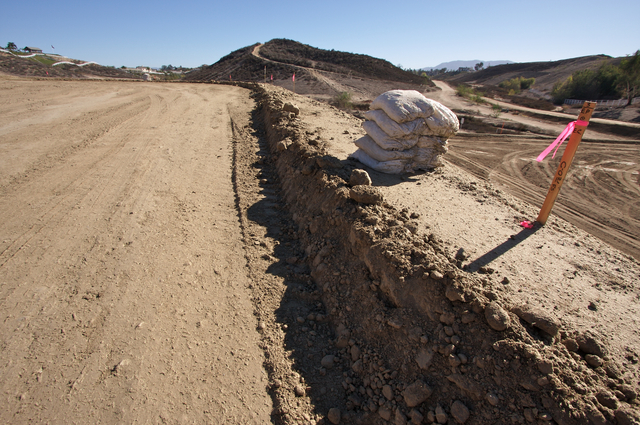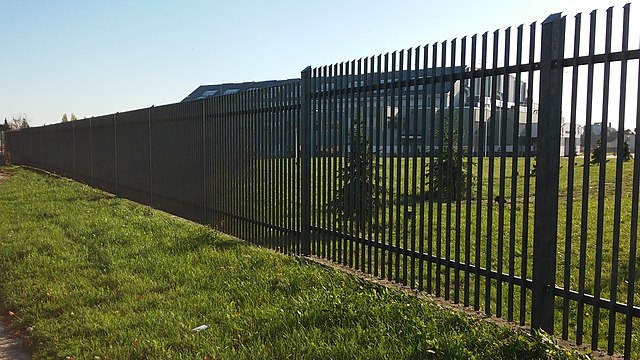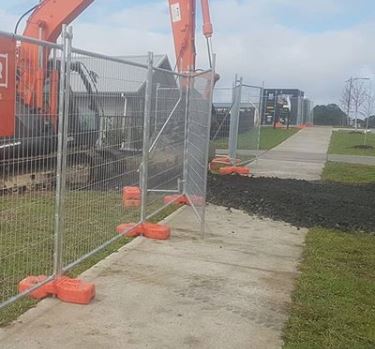
Erosion and sediment accumulation present multifaceted challenges across New Jersey’s landscapes. Sediment buildup leads to the formation of low-flow channels—a visible impact of sediment control that emerges due to the unfortunate accumulation of sediment.
At Eastcoast Site Work, we provide manual sediment removal as a proactive solution to mitigate the challenges posed by low-flow channels. This approach underscores the vital importance of proper management techniques in preserving water resources.
Understanding Eastcoast Site Work’s Expertise
Eastcoast Site Work stands as a testament to over two decades of industry experience in managing erosion control and sedimentation. Our tailored solutions cater to construction professionals, property management entities, HOA organizations, large-scale commercial properties, and municipalities across New Jersey. Our focus remains on ensuring sustainable land management, combating erosion, and addressing sedimentation concerns.
Understanding Sediment Buildup
Sediment Buildup Process
Sediment buildup is a natural occurrence resulting from erosion and transport processes. It initiates with erosion triggered by rainfall or snowmelt, dislodging loose soil and rock particles from the land surface. This runoff, carrying eroded materials termed sediment, converges into nearby water bodies, with the extent of sediment transport contingent on multiple factors. The intensity and duration of precipitation, the steepness of the terrain, soil composition, and vegetation cover all play pivotal roles in this process.
Factors Contributing to Sediment Accumulation
Several human-driven and environmental factors exacerbate sediment accumulation in water bodies. Human activities such as deforestation, agriculture, and construction significantly amplify soil erosion, thereby elevating the sediment load in runoff. Climate change further intensifies this issue by altering precipitation patterns, increasing the frequency of intense storms, and subsequently enhancing soil erosion and sediment transport rates.
Anthropogenic structures like large dams designed for various purposes, while intended to regulate water flow, often lead to the settling of sediment due to the slowed water flow. Despite the implementation of smaller check dams to impede sediment upstream, they are unable to fully curtail sediment influx downstream, resulting in sediment accumulation in larger reservoirs.
Strategies to Mitigate Sediment Buildup and Low-Flow Channel Maintenance
Removal of Sediments from Water Bodies
A common approach to manage sediment accumulation involves the removal of sediments from water bodies. This can be executed manually through dredging equipment, a process where sediments settled at the water body’s bottom are mechanically scooped out. Alternatively, innovative natural designs enable reservoirs to expel sediments downstream during high-flow events, offering a more environmentally friendly method to tackle sediment buildup.
Benefits of Low-Flow Channel Maintenance
Low-flow channels are a byproduct of sediment accumulation. They arise as an unfortunate result of sediment buildup in waterways. However, maintaining these low-flow channels becomes crucial to prevent further sediment accumulation. At Eastcoast Site Work, our emphasis on low-flow channel maintenance involves manual sediment removal, effectively addressing the underlying issue by mitigating sediment buildup in these channels. This proactive approach highlights the significance of proper land management in ensuring optimal water resource preservation.
Traditional Channel Designs and Limitations
Understanding Traditional Channel Designs
Traditional channel designs have long been employed to manage water flow and prevent flooding in various environments. However, these designs are not without their challenges. They often assume negligible sediment inflow and an immobile channel boundary at the design discharge, which overlooks the complexities of sediment transport dynamics.

The Impact of Effective Maintenance in Sediment Removal
Optimizing Channel Functionality through Sediment Removal
An essential aspect of managing traditional channels lies in effective maintenance, particularly in sediment removal. Manual removal of sediment buildup ensures the channels’ optimal functionality, reducing the risk of flooding and enhancing navigability. This crucial service is provided throughout New Jersey and Eastern Pennsylvania by Eastcoast Site Work, contributing significantly to maintaining the region’s waterways.
Case Studies of Sediment Issues in Traditional Channels
A study conducted in Texas evaluated the performance of natural channel design versus traditional channel design in reducing sediment loads and preventing accelerated streambank erosion. The traditional channel design failed to meet project objectives because of the buildup of sediments, which prevented good floodplain access.
Another example can be seen in many degraded streams where the absence of pool habitat due to sediment buildup may limit gamefish populations. This highlights the ecological impacts of sediment issues in traditional channels.
Case Study from US Army Corps of Engineers
In the Mississippi River Basin, traditional channel designs aimed at managing water flow faced severe sediment buildup issues. High sediment accumulation resulted in reduced channel depth, impeding navigability and increasing the risk of flooding during high-flow events. The Army Corps of Engineers had to execute regular dredging operations to remove the accumulated sediments, highlighting the challenge posed by traditional channel designs.
Case Study from Iowa Flood Center
In Iowa, traditional channel designs in certain waterways faced significant sediment buildup due to high runoff intensity during storm events. Sediment deposition within these channels led to reduced flow capacity, elevating the risk of localized flooding. The Iowa Flood Center implemented studies to analyze the impact of sediment accumulation on these channels, emphasizing the need for effective sediment management strategies.
These real-world examples underscore the limitations of traditional channel designs in mitigating sediment buildup, emphasizing the necessity for alternative strategies to address this persistent challenge.
Benefits of Low-Flow Channel Maintenance and Sediment Removal
Enhancing Environmental Health
Improved Water Quality and Erosion Control
Low-flow channel maintenance and sediment removal play a pivotal role in preserving water quality. By facilitating smooth water flow and reducing sediment accumulation, these practices mitigate the risks of contamination, ensuring cleaner water for both ecological systems and human consumption. Moreover, they aid in controlling erosion, preventing soil loss, and maintaining the stability of adjacent lands and infrastructure.
Application in Diverse Settings
Supporting Various Sectors in New Jersey and Eastern Pennsylvania
These practices aren’t just limited to natural water bodies. They are equally beneficial in construction sites, large commercial properties, and municipalities across New Jersey and Eastern Pennsylvania. In construction settings, sediment removal supports proper stormwater management, ensuring compliance with regulations and minimizing environmental impacts. For commercial properties and municipalities, this maintenance fosters safer, more efficient water flow, reducing potential risks associated with sediment accumulation.
Embracing Sustainable Strategies Commitment to Future Generations
Addressing Challenges through Proactive Maintenance
In the face of sediment buildup challenges, proactive maintenance strategies like low-flow channel maintenance and sediment removal stand as effective solutions. These approaches not only address current issues but also prevent future complications, ensuring the sustainable management of our water resources.
Sustainable Water Resource Management
By prioritizing these maintenance strategies, we contribute to securing a sustainable water ecosystem for future generations in New Jersey and Eastern Pennsylvania. It’s a commitment to preserving the health of our environment and ensuring the longevity of our water resources.
For proactive sediment removal and low-flow channel maintenance services in New Jersey and Eastern Pennsylvania, contact Eastcoast Site Work today to safeguard the environmental health of our local communities and preserve our water resources for the future.



